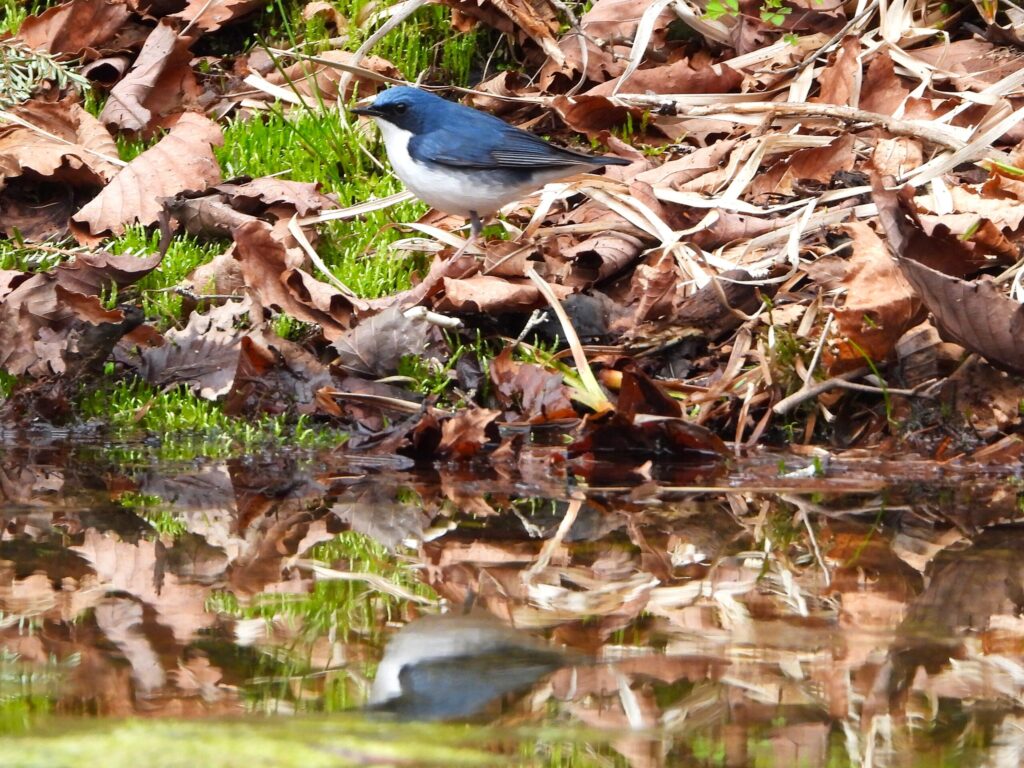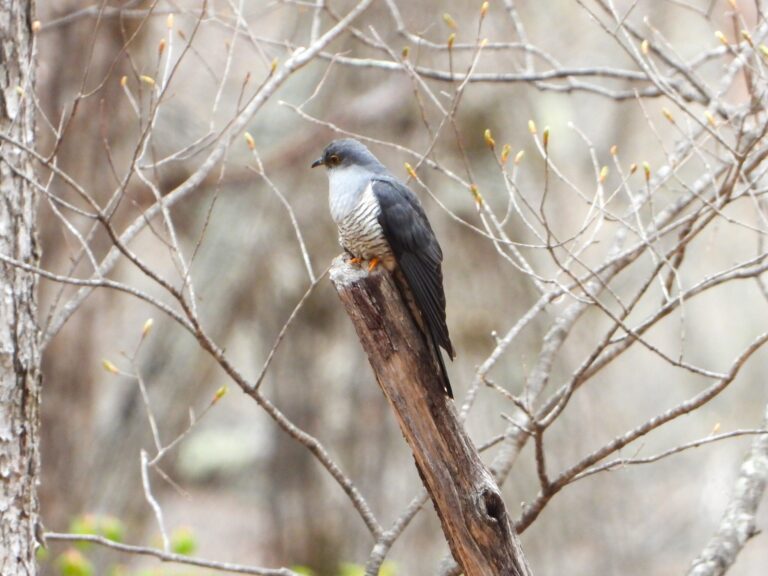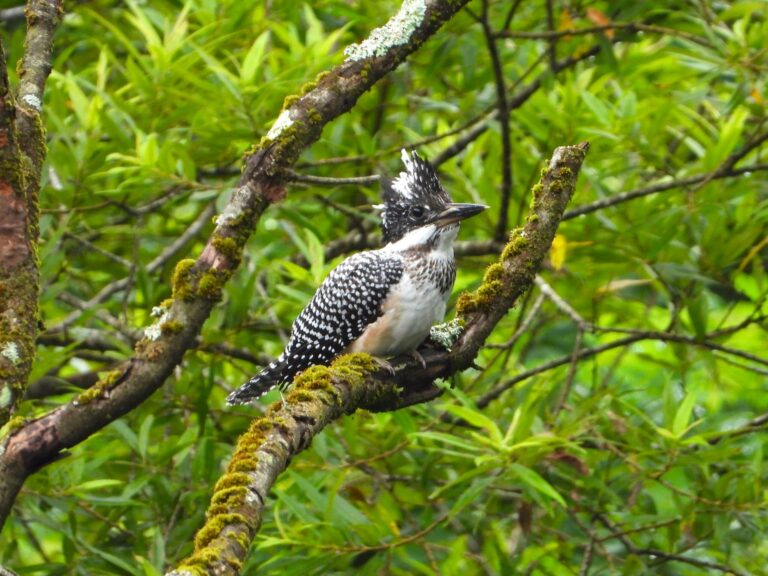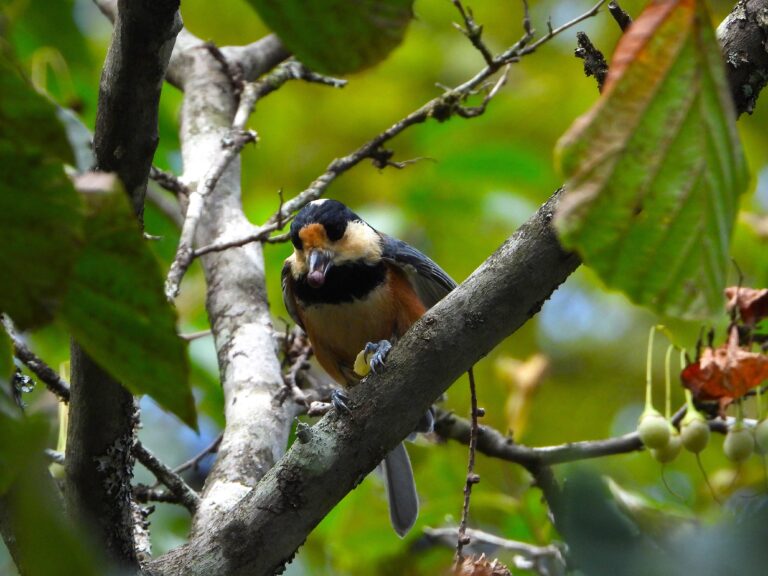Siberian Blue Robin (Larvivora cyane) – Wildlife of Japan
Introduction
The Siberian Blue Robin (Larvivora cyane), known in Japanese as Koruri, is a small migratory songbird that brightens Japan’s forest floor each summer. Breeding in northeastern Asia—including Japan—it winters in Southeast Asia before returning north in spring. Though modest in size, its deep blue plumage and delicate song make it one of the hidden jewels of Japan’s mountain forests.
Appearance
The male measures around 13–14 cm and shows vivid cobalt-blue upperparts with a white belly and pinkish legs. The female is brownish-olive with pale underparts and only faint hints of blue, well camouflaged for nesting near the ground. Juveniles resemble females but are duller overall. The striking contrast between the male’s shining blue and the dim forest light makes sightings both rare and rewarding.
Habitat & Distribution
The Siberian Blue Robin breeds in shady deciduous and mixed forests with dense undergrowth—often bamboo grass or ferns—especially along streams and slopes. In Japan it is a summer visitor, breeding from Hokkaido through northern and central Honshu, mainly between May and July. After breeding, it migrates south to wintering areas across Southeast Asia, including Thailand, Malaysia, and Vietnam. Healthy forest floors with thick understorey vegetation are vital for its survival.
Where to See in Japan
To encounter the Siberian Blue Robin, search in humid mountain forests with dense ground vegetation:
- Mount Takao (Tokyo) – low-mountain broadleaf forest up to 1,500 m.
- Hakkōda Mountains (Aomori) – beech forests with rich undergrowth.
- Hokkaido – forested ravines in the Daisetsuzan range.
Visit early in the morning from late April to July. Listen first—the male begins with a short “chit-chit-chit” before launching into a clear, melodic song. Because it forages close to the ground, patience and quiet observation are key to seeing it.
Behavior
During breeding season, males sing persistently to defend territory, often from low branches just above the undergrowth. The species spends much of its time on the ground, hopping among leaves and moss while flicking its tail. It is insectivorous, catching small invertebrates such as beetles, spiders, and earthworms from the leaf litter. The Siberian Blue Robin’s secretive nature makes it more often heard than seen.
Diet
Its diet consists mainly of insects and other invertebrates gathered from the forest floor. Occasional consumption of plant matter or berries may occur in wintering grounds, but in Japan it is a strict insect-eater. Because it depends on undisturbed forest litter, clearing or trampling of undergrowth can directly affect its feeding success.
Reproduction
The breeding season runs from May to July. The female builds a cup-shaped nest of moss and leaves on or near the ground—under a root mass, fallen branch, or in dense vegetation. She lays four to six eggs and performs most of the incubation, while both parents feed the chicks. Ground nesting makes the species vulnerable to predators and to loss of undergrowth. Occasional cases of brood parasitism by the cuckoo (Cuculus fugax, known as Jūichi in Japan) have been documented.
Conservation
Globally, the Siberian Blue Robin is listed as Least Concern by the IUCN. However, within Japan local declines have been observed where deer over-browse or human activity degrades the forest floor. Prefectures such as Kyoto have classified it as Near Threatened because of disappearing bamboo understorey. Protecting intact, shaded forests with rich vegetation is essential for maintaining stable populations.
Author’s Impression
I encountered the Siberian Blue Robin around a small pond high in the mountains. The male’s song echoed beautifully through the cool forest air, a moment of pure magic. Seeing this tiny blue bird singing so gracefully in the quiet woods was unforgettable.
It’s not an easy species to find, but if you follow its song and search patiently, you may be rewarded with a glimpse of Japan’s secret blue bird of the forest.








